 |
||
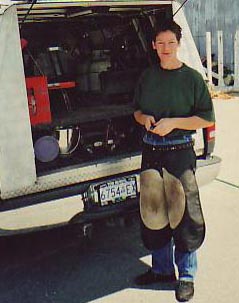
Feed it?
Nutritional imbalances that result in wall cracks if ignored can cover
any or all of the hoof making it too weak to hold a shoe or
stay barefoot! There is a very simple formula made up as a supplement
to add to horses' feed. It is a zinc, methionine and biotin mixture and
I have found it to be very effective in treating a multitude of problems
from severely cracked hooves to fungal infections and abscesses to weak
and shelly hooves so commonly caused by nutritional deficiencies. Trim it? 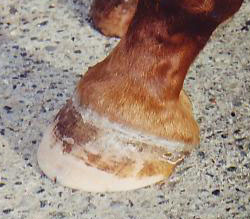
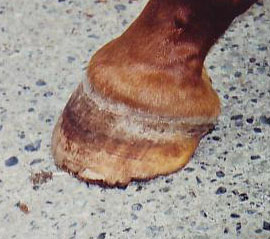
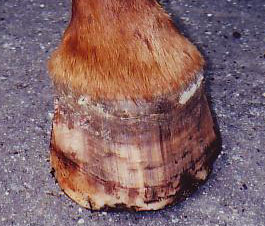
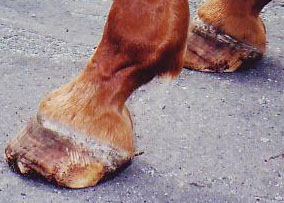
Shoe it?
Regular hoof care is a must. Just like no two pairs of human feet are alike the same premise applies to the horse. You just can't slap a shoe on a horse and hope for the best. Farrier work requires years of experience and an intimate knowledge of a horse's foot, it's movement and how to balance an incorrect growth pattern. Diseases of the foot also require an expertise at designing corrective shoes. A good farrier will have an extensive knowlege of all things pertaining to the foot and then follow-up that knowledge with a rigourous continuing education. It is imperative to qualify your farrier and check into their qualifications. There are no checks and balances in place - no watchdog corporation to set quality control standards so find a farrier that you know comes with a good reputation. Good, regular hoof care might be one of the most significant costs of upkeep with the horse but will save you thousands in the long run.
"shoes are not neccessarily bad for horses but BAD SHOEING IS!